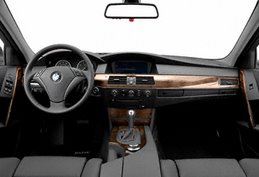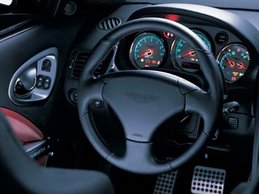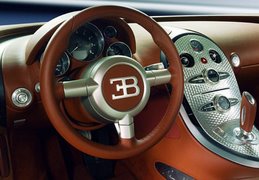 2004 Acura TSX - Trying to apply that drooling dialogue to anything but a sexy exotic becomes a stretch. In the Acura lineup, the only candidate for this sort of lust is the NSX sports car. Not that all premium Hondas aren’t “choice” automobiles—it’s just that none but the NSX delivers the prestige and performance comparable to a Ferrari’s.
2004 Acura TSX - Trying to apply that drooling dialogue to anything but a sexy exotic becomes a stretch. In the Acura lineup, the only candidate for this sort of lust is the NSX sports car. Not that all premium Hondas aren’t “choice” automobiles—it’s just that none but the NSX delivers the prestige and performance comparable to a Ferrari’s.Take Acura’s new sports sedan, the TSX. It’s a car that distances itself from its rivals not by performance numbers (although they’re generally as good) but rather by how it performs. The TSX goes about its business so smoothly and so silkily that precision could be its middle name. And it is targeted squarely at those Gen Xers who so fondly remember the words of the wise Ferris.
That now 30-something demographic—a majority married, more than half males, pulling in about $80,000 a year, according to Acura—is whom the brand is missing with the just-out-of-college RSX and the wife-and-kids TL. So enter the gap-filling TSX, a $26,990 rebadged European-market Honda Accord equipped with either the six-speed manual tested here or a five-speed automatic with a manual-control feature. At that price, Acura’s demographic prediction makes sense. TSX buyers won’t be the same guys dropping 30 large on Mitsubishi Evos or Subaru STis—what wife would allow her husband to buy a car with a wing the size of an ironing board? We all know who makes those calls.
For just under $27,000, the TSX comes loaded. That means perforated leather seats (heated up front), dual-zone automatic climate control, a power sunroof, a 360-watt stereo with an in-dash six-CD changer, high-intensity-discharge headlights, and 17-inch wheels. Tack those features onto an Audi or BMW, and you’ll understand the meaning of base price. The only option on the TSX is a $20
 00 navigation system with voice recognition.
00 navigation system with voice recognition.Sit behind the TSX’s leather-wrapped, three-spoke steering wheel, and it appears as if all the money went into the materials and the fluidity of the parts. The sumptuous leather, the tasteful metallic accents, the LED gauges, and the top-grade plastics are befitting a car costing twice as much. The dash covering is made sans PVC, a material that can wreak havoc on quality control, and instead is manufactured using a high-caliber spray-formed urethane skin technology. All the materials scream luxury, and all the parts whisper smooth. Every knob, switch, and moving part seems to be glazed with Teflon. In fact, the moving parts of the tilting and telescoping steering wheel are coated with a resin for ease of operation.
The engine wouldn’t be nearly as satisfying if not for the gem of a gearbox. Housed in a magnesium case for weight reduction, the six-speed manual features multicone synchronizers on all gears and 45-millimeter (about 1.75 inches) shift throws (an S2000’s are about 35mm) that result in a pleasingly light, crisp action; a flick of the wrist is all that’s required to row from gear to gear. Consequently, the powertrain harmony makes for brisk acceleration: 0 to 60 mph takes 7.2 seconds, which is as swift as the Lexus IS300, quicker than the Saab 9-3 Vector (7.3), but a few ticks slower than the BMW 325i (7.0) and Mazda 6 s (6.8). It should be noted, too, that the TSX’s 5-to-60-mph street-start time (7.7)—a more realistic indication—is only half a second slower than the clutch-burning launch, indicating that the closely spaced gear ratios make the most of the 2.4’s power band.
On the skidpad, the TSX pulled 0.85 g, which easily tops its four-cylinder Accord sibling (0.77) and bests adhesion numbers from competing front-drivers—the Saab 9-3 Vector (0.83) and the Mazda 6 s (0.84)—as well as the rear-drive Lexus IS300 (0.78). The only car the Acura couldn’t outgrip is the BMW 325i (0.86).
With a chassis as good as the TSX’s, the car is begging for more than just grippier shoes. Another 20, 30—Do we hear 40?—horsepower would really show off the chassis’s capabilities. But remember that the TSX is young, and Acura is bound to spice it up as it ages. Otherwise, there’s little to criticize about the TSX dynamically. The steering, à la Audi’s A4, is light, direct, and precise from lock to lock and exhibits a firm on-center feel with zero play. The brakes, with pie-size 11.8-inch vented front discs and 10.2-inch solid rear discs, f
 urnish sure stopping power and direct progression, decelerating the 3246-pound TSX from 70 to 0 mph in 185 feet.
urnish sure stopping power and direct progression, decelerating the 3246-pound TSX from 70 to 0 mph in 185 feet.When driven near the limit, the TSX is a very predictable car. It has no surprises in store, delivering only what you’d expect in a well-balanced (60/40-percent front-to-rear weight distribution) front-driver. That means some understeer and body roll when rapid entry speeds and acute corners are unwilling to cooperate, but like we said, the dynamics are predictable. As is the remedy: Ease up on the throttle, allow the tires to scrub speed, and then show the throttle more love once the nose tucks in. As far as handling characteristics, the TSX is reminiscent of the dearly departed Honda Prelude, a multiple 10Best winner and champion of our “Best Handling Car Under $30,000” (June 1997).













No comments:
Post a Comment